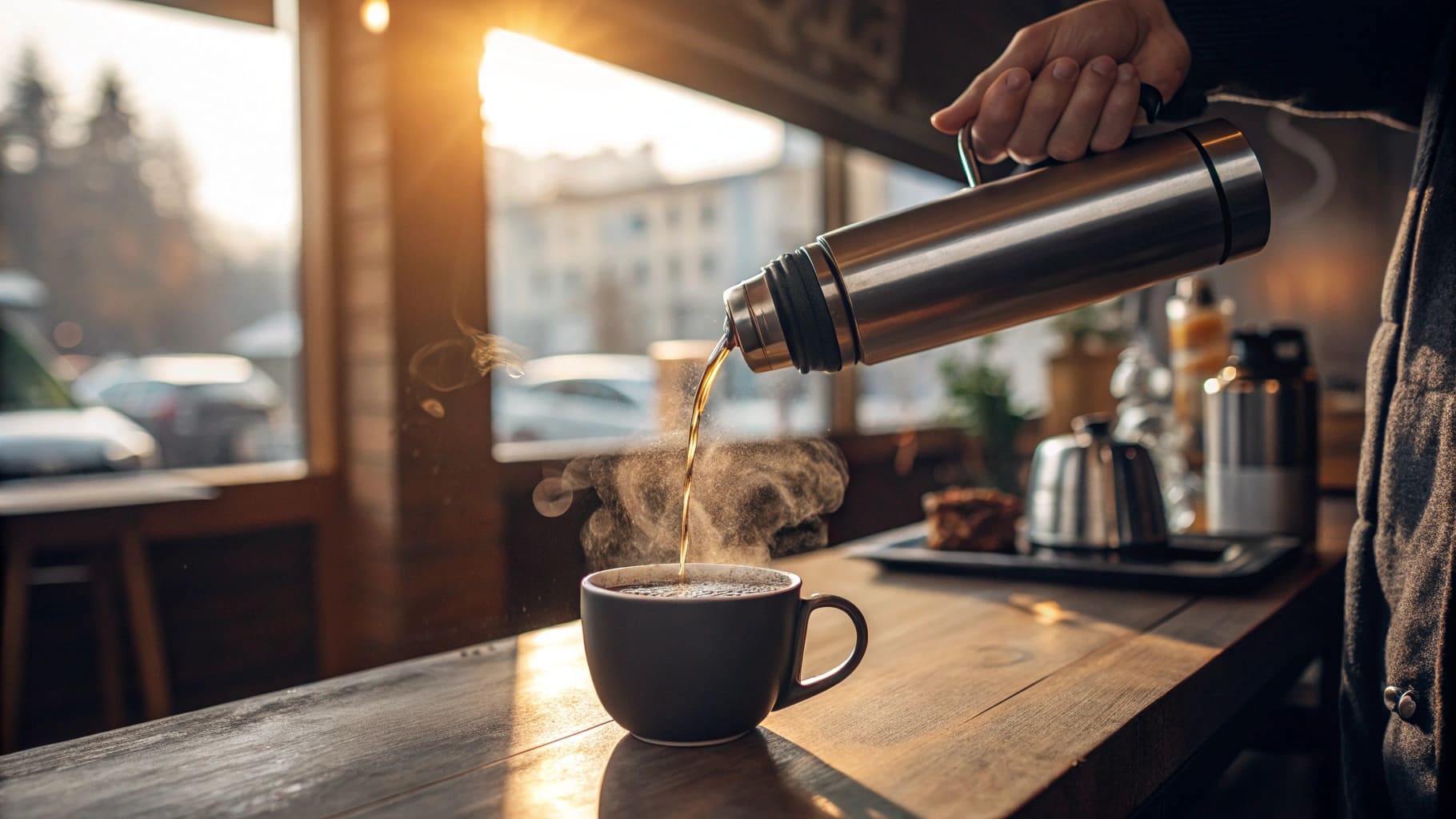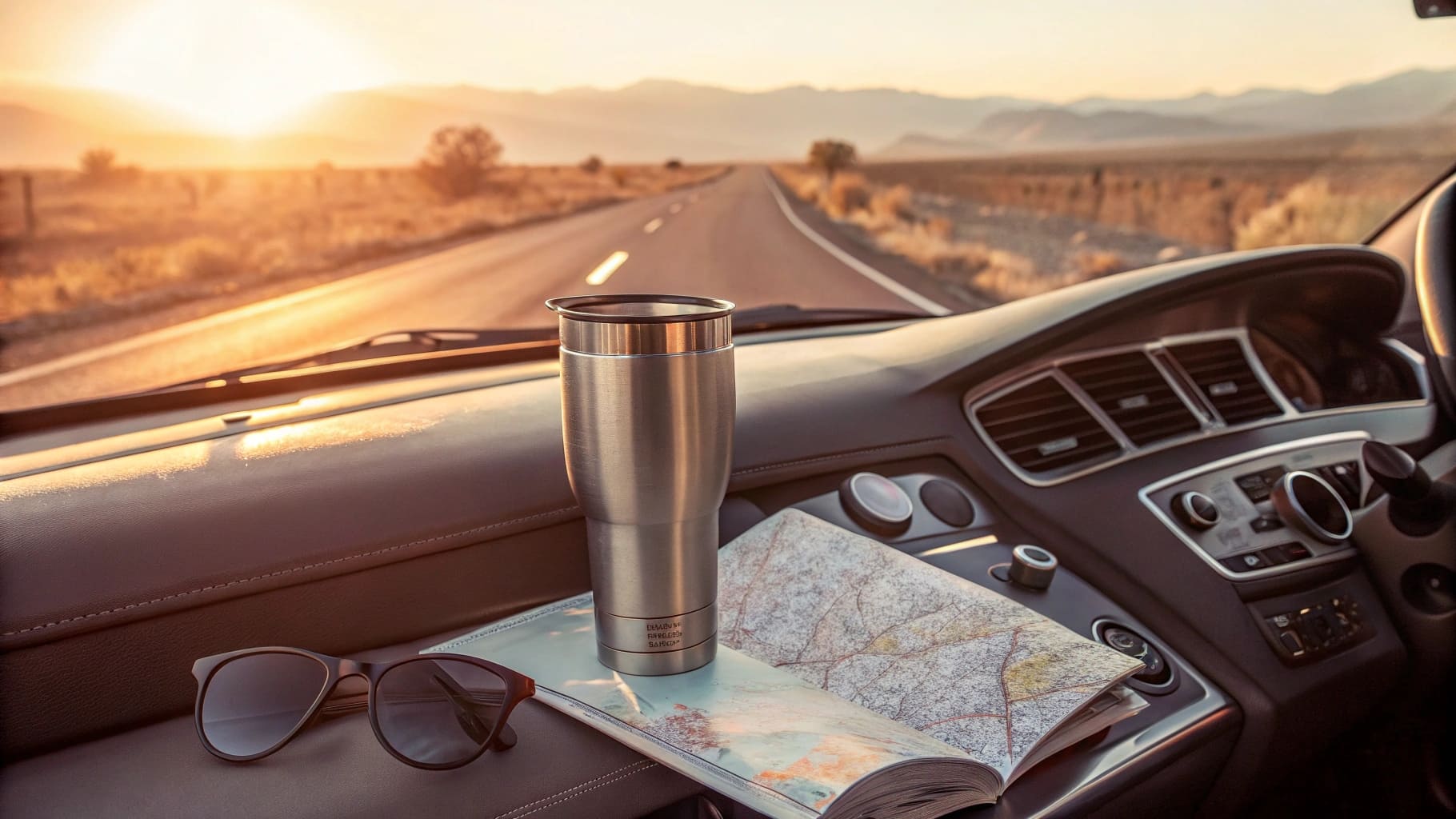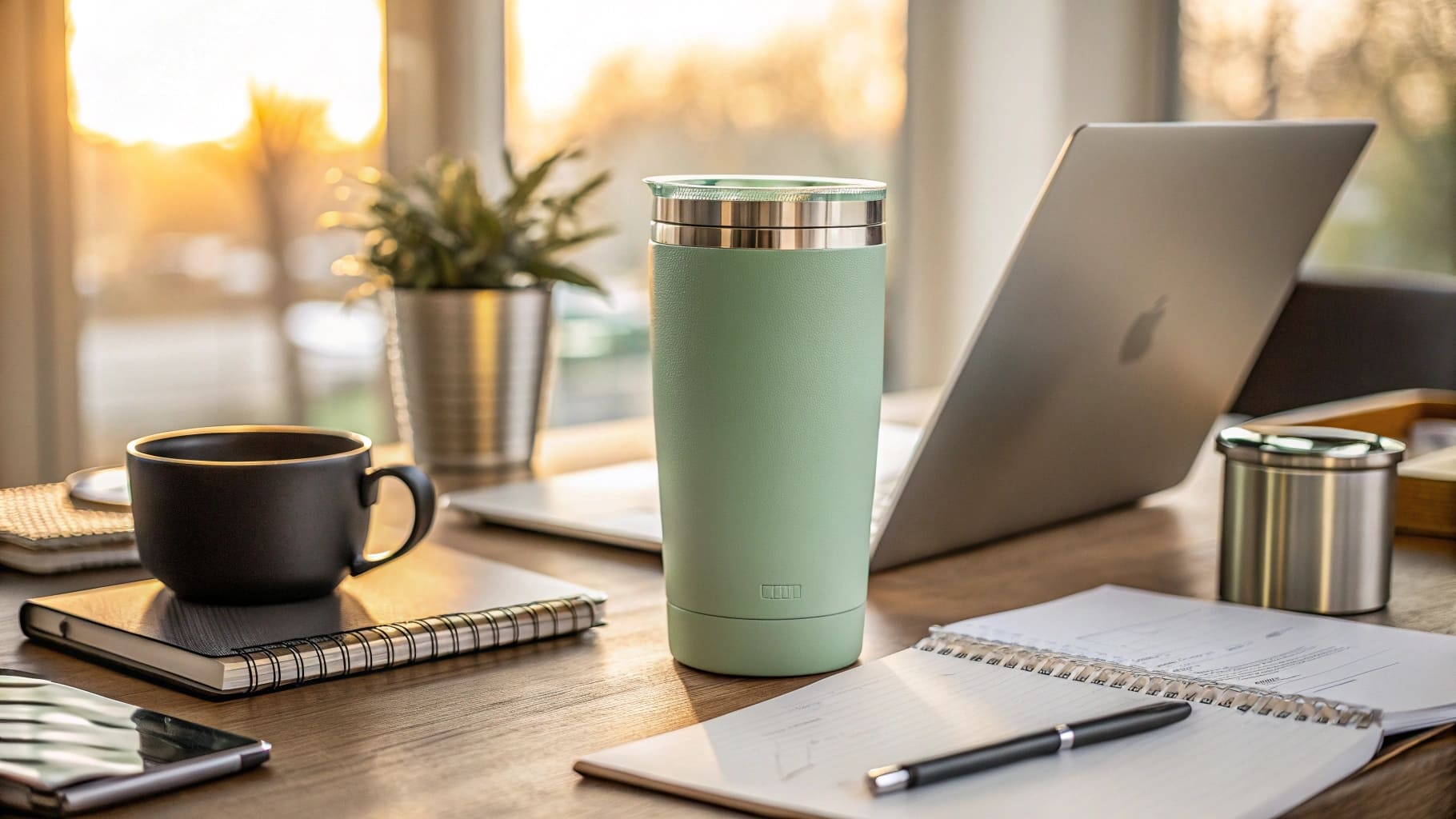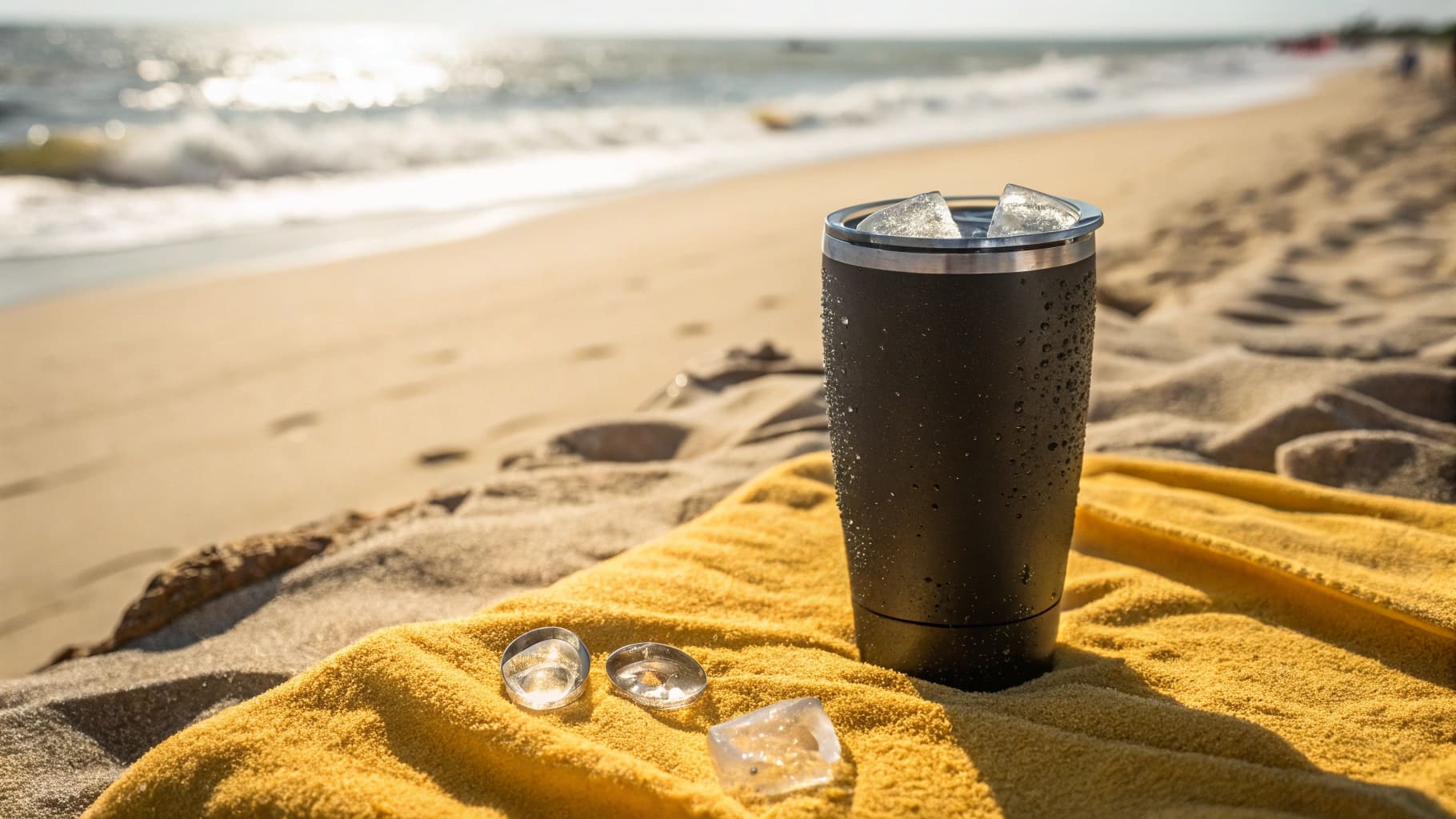Planning your 2025 product line is tough. Choosing the wrong cup trends can mean unsold inventory. I'll guide you through what your customers will actually want.
For 2025, the biggest trend isn't just a color or a new shape. The real trend is mastering the basics. Your customers are focusing on material quality, beverage safety, and functional differences. Understanding these fundamentals is your key to selecting profitable products that build brand trust.

You might think trends are all about aesthetics. And yes, colors and designs are important. But in my years of experience as a manufacturer, I've learned something crucial from dealing with sharp business owners like Mark from Canada. The real money, the long-term success, comes from understanding the fundamentals. The questions I get asked most often are the ones that reveal the true "trends" that will impact your bottom line. Let's break down these essential questions. Answering them for your customers is how you will win in 2025.
Why is stainless steel so good for cups?
Worried about customers complaining about fragile or plastic-tasting cups? Your customers feel the same way. Stainless steel offers a durable, clean-tasting solution that builds brand loyalty.
Stainless steel is excellent for cups because it's incredibly durable and won't break like glass or ceramic. It doesn't hold onto flavors, so your drink tastes pure every time. Plus, its insulation properties keep drinks hot or cold for hours, a major selling point for consumers.

When a new client asks me this, I tell them to think about three things: strength, taste, and temperature. First, strength. These cups are built for real life. Your customers can drop them, toss them in a bag, or take them camping. They resist dents and scratches. This durability means your brand is associated with quality and longevity, not with products that need to be replaced. Second, taste. The material we use, food-grade 304 stainless steel, is non-reactive. This is a technical term, but it simply means the metal won't affect the flavor of the drink. Water tastes like water, not metal. This is a huge advantage over some plastic bottles that can leave a strange taste. Third, temperature. The double-wall vacuum insulation is the real magic. It creates an airless space between two walls of steel, which dramatically slows down heat transfer. This is how a cup can keep coffee hot for a morning commute or water cold during a workout.
| Feature | Stainless Steel | Plastic | Glass |
|---|---|---|---|
| Durability | High | Medium | Low |
| Taste Purity | Neutral | Can leach flavor | Neutral |
| Insulation | Excellent | Poor | Poor |
| Safety | High | Varies (BPA) | High |
Can you really use a stainless steel cup for coffee?
Coffee lovers are picky about taste. I know I am. A bad cup can ruin the experience and their perception of your brand. Let's ensure your cups deliver the perfect brew.
Yes, absolutely. High-quality stainless steel, like food-grade 304, is non-reactive. This means it won't ruin the complex taste of your coffee. It also excels at keeping coffee hot for hours, making it a far superior choice to ceramic or paper cups for commuters.

I remember a client from Europe who was very skeptical. He was a coffee purist and was convinced our cups would add a metallic taste. I didn't just argue with him; I sent him samples. I told him to brew his favorite coffee and pour half into his usual ceramic mug and half into our stainless steel tumbler. An hour later, he emailed me. He was shocked. Not only was there no metallic taste in our tumbler, but the coffee was still perfectly hot, while the coffee in his ceramic mug was lukewarm. He became one of my best customers. The secret is using the right material. High-quality 304 stainless steel doesn't have pores or react with acids in coffee. The only time you might get a bad taste is if the cup isn't cleaned properly and coffee oils build up. For coffee drinkers, the temperature control is a game-changer. It means the last sip is almost as good as the first.
Is it safe to put milk in a stainless steel cup?
Worried about milk spoiling or bacteria growing in your cups? This concern can stop a customer from buying. Let's clear up the facts so you can reassure them.
Yes, you can safely put milk in a stainless steel cup for your latte or protein shake. The material is non-porous, which helps prevent bacteria growth. However, it's crucial to clean the cup thoroughly and promptly after use, as milk residues can spoil if left behind.

The key word here is "clean." The stainless steel itself is perfectly safe for milk. Unlike some plastics that have tiny pores where bacteria can hide, stainless steel has a smooth, solid surface. When you wash it properly with soap and warm water, you remove all the residue. The problem isn't the cup; it's what happens when milk is left at room temperature for too long in any container. I always advise my B2B clients, like you, to include simple care instructions with their products. A small card that says "Rinse immediately after use with dairy or protein" can make a huge difference. It shows you care about the customer's experience and helps prevent complaints about bad smells. This small step builds trust in your brand and demonstrates that you're selling a high-quality, hygienic product that is safe for all kinds of drinks. It's a simple way to add value.
Are all stainless steel cups really the same?
Trying to choose a supplier? It's tempting to go with the cheapest option. But hidden differences in quality can lead to customer complaints, returns, and serious damage to your brand's reputation.
No, they are absolutely not the same. The biggest difference is the grade of the steel used. Food-grade 304 (also known as 18/8) is the industry standard for quality and safety. Cheaper cups might use lower-grade 201 steel, which can rust and affect taste.

This is the most important question for any importer or brand owner. It's where you protect your business. My client Mark is very aware of this, as he's been burned before by suppliers who promised one thing and delivered another. The main difference lies in the material composition.
Understanding Steel Grades: 304 vs. 201
The two most common types you'll see are 304 and 201 stainless steel. On the outside, they look identical. But their performance is vastly different. We exclusively use 304 for all our drinkware. It contains more nickel and chromium, which makes it highly resistant to rust and corrosion. Cheaper 201 steel has less nickel and more manganese, making it much more likely to rust over time, especially if it gets scratched or exposed to acidic drinks. For a brand, having a cup that rusts is a disaster.
| Feature | 304 (18/8) Stainless Steel | 201 Stainless Steel |
|---|---|---|
| Corrosion Resistance | Excellent | Poor |
| Food Safety Rating | High (Industry Standard) | Low (Not Recommended) |
| Cost | Higher | Lower |
| Brand Risk | Low | High |
To protect yourself, always demand material certification for 304 stainless steel from your supplier. And don't just trust the paper; ask about their quality control and testing process. This is how you avoid the pain of certificate fraud and ensure you're selling a product you can be proud of.
Is it actually safe to drink tea in a stainless steel cup?
Tea drinkers often value tradition and pure flavor. They might be hesitant to use a modern metal cup. Don't let this uncertainty cost you a potential market segment.
Yes, it is perfectly safe to drink tea from a high-quality stainless steel cup. Just like with coffee, food-grade 304 stainless steel is non-reactive and won't alter the delicate flavors of your tea. It also keeps tea at the perfect sipping temperature for longer.

Some tea enthusiasts worry that the tannins or acidity in tea could react with the metal. This is a valid concern if you're using a low-quality or unknown metal. However, with food-grade 304 stainless steel, this is not an issue. I've had many clients who specifically target the tea market. We've tested our cups with everything from strong black teas to delicate green teas. The result is always the same: the flavor remains pure and untainted. The steel preserves the intended taste created by the tea leaves. Furthermore, many of our tumbler designs are available with fine-mesh tea infuser attachments. This makes the cup an all-in-one brewing and drinking solution, which is incredibly convenient for modern tea drinkers. By offering this, you're not just selling a cup; you're selling a better, more convenient tea experience. It's a feature that directly appeals to this specific audience and makes your product more attractive.
Conclusion
For 2025, focus on quality fundamentals. Understanding steel grades, beverage safety, and functional benefits will build a stronger brand and drive more sales than any passing design fad.

